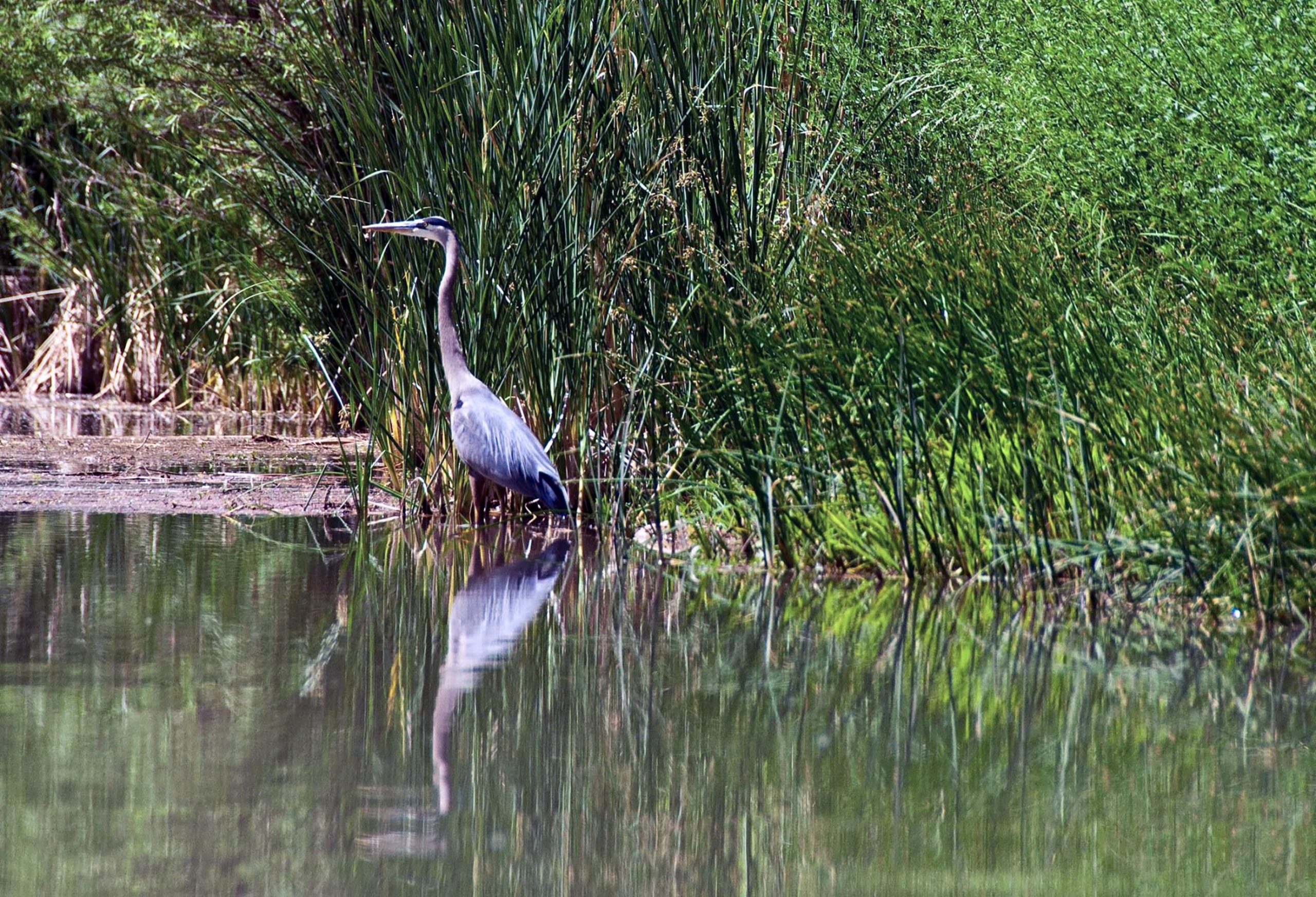Learn
Great Blue Heron – Ardea herodias
As Friends’ resident bird nerd, I’m thrilled to begin this new series: Bird of the Month!
Here in the Verde Valley, we are blessed with beautiful habitats, a rich diversity of species, and an abundance of life. My hope is to celebrate some of the species that make the Verde Valley so beautiful, while sharing some interesting facts with you.
At the heart of the Valley is the Verde River, one of the last free-flowing rivers in the Southwest. Winding through the red rocks, willows, and cottonwood trees, el Rio Verde ties together all life in the Verde Valley. I want to begin this series by acknowledging the original stewards of this land, the Indigenous people past & present from the Sinagua and Hohokam peoples to present day Yavapai, Hopi, Apache, Zuni, and other tribes. All of us who love this region are deeply indebted to Indigenous-led care and stewardship of this precious river and surrounding habitats.
The Great Blue Heron is a stately bird. It’s widely recognizable with its long throat plume feathers that wave in the wind, its dark cap, and its slatey blue coloration. Great Blues aren’t picky eaters, and will feed on fish, amphibians, reptiles, and even small mammals and other birds. I once watched a Great Blue hunting gophers in a field in Zion National Park, far from a water source. While they will happily stuff anything that moves into their impressive feeding pouch, they typically prefer to hang around water, as they are extremely well-adapted to hunting aquatic creatures.
Great Blue Herons nest in multi-family colonies called “rookeries,” and they build their nests using large sticks and branches near the tops of standing dead trees surrounded by water. This method of nesting helps deter predators from reaching the herons’ nests. In the last several decades, as beaver populations have increased across the country, heron populations have also increased in regions. This is because beavers create perfect nesting habitat for Great Blues! Beavers notoriously create dams, which create more small ponds and standing water, which can flood forests and lead to tree die-off, essentially making perfect conditions for heron rookeries.
Heron relatives recognizable to genus Ardea (the group containing Great Blue Herons and their close relatives) have been around since the middle Miocene epoch, which was around 23.03 to 5.333 million years ago. Herons have been a part of North American habitats long before the first early humans began to live here. Great Blue Herons have existed in their current form for over 1.5 million years. Imagine, if you will, a scene from the Pleistocene, where wooly mammoths and sabre-toothed cats would have roamed. Great Blue Herons were part of this landscape, too, and have always been a part of the human imagination.
Presently, Great Blue Herons are a widespread species. Happily, their populations are relatively stable, however they do face several conservation threats. Development has decreased the number of available sites for rookeries, threats to freshwater habitats decreases food supply, and lead fishing tackle poisons thousands of herons – and many, many other bird species – each year.
How can you help Great Blue Herons? You can help herons and other wildlife by supporting policies that protect habitat, by supporting Indigenous-led land stewardship (and other conservation groups), by watching what you put into the water system, and by finding alternatives to lead fishing tackle and hunting shot. You can also support Friends! Efforts to preserve the Verde help keep herons healthy, too.
Thank you for joining us for our first Bird of the Month! Have a question, or an idea for a future Bird of the Month? Please send me an email at MayaR@verderiver.org!






